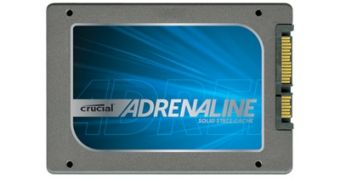People may not be particularly enthusiastic about changing their storage unit, or upgrading to an SSD, but Crucial thinks it has found a suitable compromise.
SSD caching is a method of improving performance that has existed for a while.
Basically, with the right software, an SSD can be allowed to automatically store frequently used files.
Since flash memory is much faster than HDDs, the OS can start much faster and so can applications.
Crucial has just made the official introduction of the Adrenaline Solid State Cache Solution, a kit made of an m4 SSD and a 3.5-inch adapter bracket.
“Many PC users are reluctant to give up their high-capacity hard drives for the performance of a solid state drive,” said Robert Wheadon, worldwide senior product manager, Crucial.
“Crucial Adrenaline offers these consumers an affordable bridge between hard drives and solid state drives, so they won’t be forced to choose capacity over performance, or vice versa.”
The m4 SSD has a capacity of 50GB, more than enough for the operating system and whatever else can benefit from being cached.
“Consumers are storing lots of digital movies, photos, and music on their home PCs, and as the amount of content grows, they want better PC performance for faster access to that content, similar to what SSDs provide,” added Wheadon.
“Crucial Adrenaline uses solid state technology as a cache for an existing hard drive to accomplish this goal, and delivers a compelling and affordable upgrade solution.”
SSD caching works by taking a hard disk drive and a solid state drive and making the operating system treat them as a single partition.
When new files are copied, they are stored on the HDD, but those more commonly used are copied onto the 'invisible' SSD component as well.
That way, the fast read and write speeds of NAND Flash memory can complement the high capacity of whatever HDD the desktop is equipped with.

 14 DAY TRIAL //
14 DAY TRIAL //